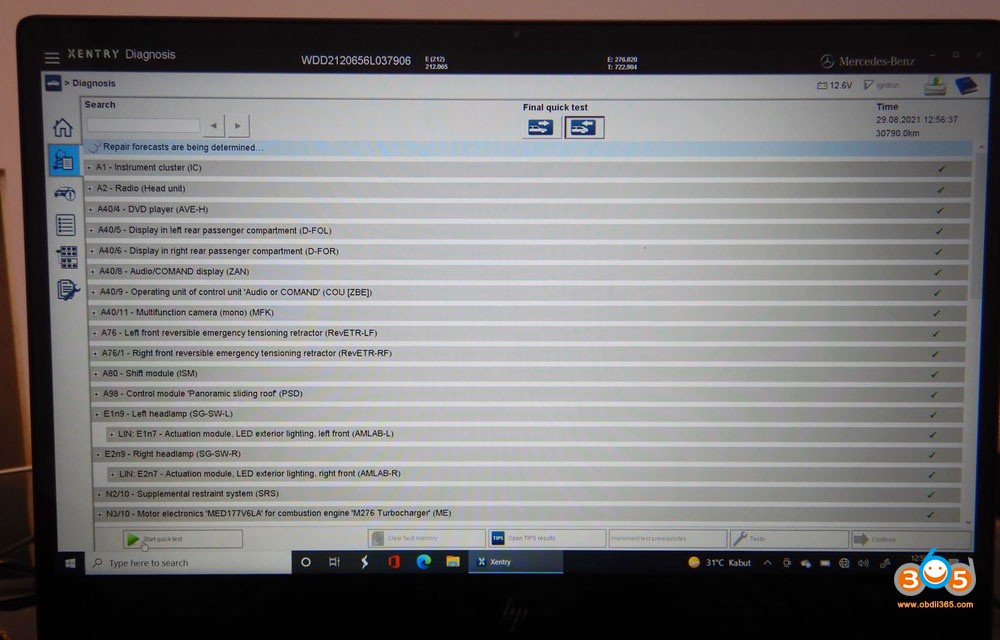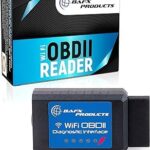Xentry Passthru and Openshell are two prominent diagnostic software options for Mercedes-Benz vehicles. While both offer access to vital vehicle data, they differ significantly in hardware requirements, functionality, and vehicle coverage. This article delves into a detailed comparison of Xentry Passthru vs. Openshell, outlining their key distinctions to help you choose the right solution for your needs.
Key Differences Between Xentry Passthru and Openshell
The core difference lies in their hardware dependency. Xentry Passthru leverages the J2534 standard, allowing it to operate with various third-party J2534 Passthru devices. This open architecture provides flexibility and affordability, making it a popular choice for independent workshops. Conversely, Openshell (often referred to as XDOS) requires specific Mercedes-Benz hardware, such as the SD Connect C4 or C5 multiplexer. This reliance on proprietary hardware results in higher setup costs but potentially offers broader functionality.
Hardware Requirements: Flexibility vs. Dedicated Setup
- Xentry Passthru: Compatible with a wide range of J2534 Passthru interfaces, including Tactrix OpenPort 2.0, Autel MaxiFlash Elite, and more. This allows for greater flexibility in choosing hardware that fits your budget and existing toolset.
- Openshell (XDOS): Requires dedicated Mercedes-Benz hardware like SD Connect C4/C5. While more expensive, this dedicated hardware may offer faster communication and deeper integration with the vehicle’s systems.
Example of Xentry Passthru setup using a J2534 device.
Vehicle Coverage: Comprehensive vs. Limited Support
- Xentry Passthru: Supports most Mercedes-Benz passenger cars but has limitations with commercial vehicles, trucks, and specific models like Bharat Benz, Foton, and Unimog. It primarily focuses on diagnostic functions.
- Openshell (XDOS): Generally provides broader vehicle coverage, including commercial vehicles and specialized models not supported by Passthru. It offers both diagnostic and programming capabilities.
Functionality: Diagnostics vs. Diagnostics and Programming
- Xentry Passthru: Primarily designed for diagnostic tasks such as reading and clearing fault codes, performing health scans, and accessing live data streams. While it excels in diagnostics, it often lacks programming and coding functionalities.
- Openshell (XDOS): Offers a wider range of functionalities, including diagnostics, programming, coding, and special functions. It allows for more in-depth interaction with the vehicle’s control units.
Xentry Passthru displaying diagnostic information.
Choosing the Right Solution: Xentry Passthru or Openshell?
The optimal choice depends on your specific requirements and budget.
- Xentry Passthru: Ideal for independent workshops and DIY enthusiasts seeking a cost-effective solution for diagnostics. Its flexibility with J2534 devices makes it accessible and adaptable to various setups.
- Openshell (XDOS): Suitable for professionals requiring comprehensive diagnostic and programming capabilities, especially for commercial vehicles or specialized models. The investment in dedicated hardware is justified by its broader functionality.
Conclusion: Making an Informed Decision
Both Xentry Passthru and Openshell provide valuable access to Mercedes-Benz vehicle data. By understanding their core differences in hardware requirements, vehicle coverage, and functionality, you can make an informed decision that best aligns with your diagnostic needs and budget. Whether you prioritize flexibility and affordability or require the full suite of diagnostic and programming capabilities, choosing the right software is crucial for efficient and accurate Mercedes-Benz vehicle maintenance.
Detailed data analysis available within Xentry Passthru.

